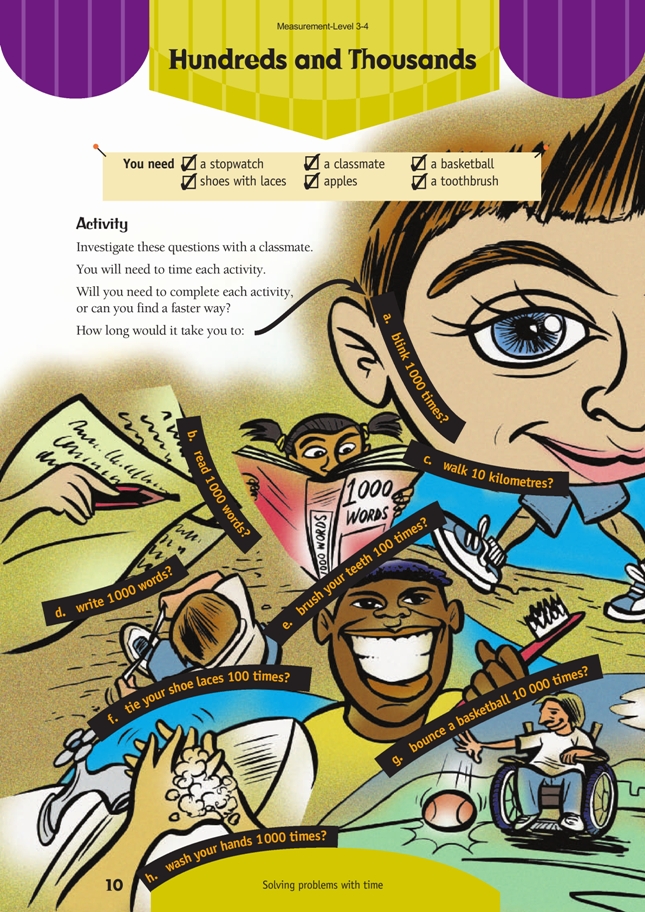This is a level 3 measurement activity from the Figure it Out series.
A PDF of the student activity is included.
Click on the image to enlarge it. Click again to close. Download PDF (553 KB)
plan and conduct investigations relating to time
basketball, shoes with laces, apples, toothbrush
FIO, Level 3-4, Measurement, Hundreds and Thousands
classmate
The purpose of this activity is for students to find an efficient way to work out how long it would take them to perform various tasks, without actually completing all the tasks. Introduce the activity carefully so that the students do not waste their time completing the task. Ask them to suggest quick ways to time each task. They might suggest that they do a fraction of each task and from this, calculate the time to do the complete task.
If necessary, suggest this strategy by asking questions such as:
“How could you use the time taken to blink 10 times to make a good estimate for 1 000 blinks?”
“What fraction are you actually measuring?”
“How can you use this fraction to work out the time for the whole task?”
A common example of this that you could discuss with the students is taking a pulse. A pulse is usually measured in beats per minute, but the beats of the pulse are rarely counted for a whole minute. Usually they are counted for 10 seconds (which is 1/6 of a minute) and then this count is multiplied by 6 to give the number of beats per minute.
Make sure that the students can use the reciprocal of the fraction, for example, 1/10 and 10/1, to solve the problem. They should be able to explain this in words, such as: “If we only measure 1/10 of the task, we could work out the time by multiplying that measure by 10.”
The students could use class time to work out a good fraction to use with each task. They could then measure some of the tasks for homework, using the reciprocal of the fraction to answer each question.
Answers to Activity
Answers will vary. You could do a fraction of each activity (for example, 1/5, 1/10, 1/100) and then multiply the result by the relevant whole number. (Fractions
used could vary according to the activity, for example, you might wash your hands once but read 100 words.)
